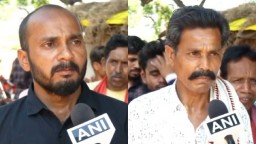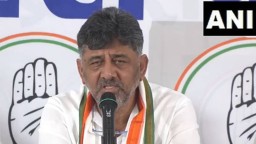Latest News
BHAKTI HI SHAKTI HAI

The nine-day Navratri festival takes place in the month of Ashvin. This year devotees will witness the auspicious Navratri festival from today, September 26 to October 5. ‘Nav’ means nine and ‘Ratri’ means night. It frequently concludes with Dussehra, also known as Vijayadashami observed on the tenth day of Navratri. In some regions of India, Dussehra is celebrated as the festival’s main event, essentially extending its duration from nine to ten days. Additionally, because Navratri is based on the lunar calendar, it might sometimes last eight days, with Dussehra falling on the ninth day. There are four related holidays known as Navratri that take place throughout the year. Nevertheless, the early-autumn festival known as Sharad Navratri is the most essential. It starts on the same day as Durga Puja, a 10-day celebration honouring the Goddess Durga’s victory that is especially cherished in some eastern states. In varied ways, Navratri is observed throughout India’s many regions. While some people use this time for dancing and feasting, while many use it for religious thoughts. Keeping a strict vegetarian diet and avoiding alcohol and specific spices are some fasting habits. Dances are performed, particularly the Garba in Gujarat. The nine nights of the festival are typically devoted to various facets of the divine feminine energy or shakti. The first third of the festival often concentrates on features of the Goddess Durga, the second third on the Goddess Lakshmi, and the last third on the Goddess Sarasvati, however, the pattern varies significantly by location. Offerings and ceremonies are frequently performed in honour of the Goddesses and all of their incarnations. Kanya Puja, which occurs on the eighth or ninth day, is one wellknown ceremony. Nine young girls are costumed as each of the nine goddess facets honoured during Navratri in this rite. The celebration is also known as the Durga Puja, especially in Bengal and Assam. The puja or ceremonial, days are commemorated with public performances, recitations, dramas and fairs in addition to home celebrations. In some areas, the festival of Navratri is considered to be of ten days which includes Dussehra. Dussehra is a time to rejoice in the triumphs of good over evil, whether it is during the entire festival or only on the tenth day.
FASTING DURING NAVRATRI
Fasting is a fairly popular practice among Hindus according to the Hindu calendar. Devotees practise fasting to show their devotion and love towards Goddess Durga and her nine avatars. They think that fasting satisfies their desires and demonstrates their adoration for the Gods and Goddesses. Hindus celebrate the nine glorious incarnations of the goddess Durga, also known as NavaDurga, during the festival of Navratri. Most commonly, fruits, kuttu aata, sabudana, samak rice, dairy items, and sendha namak can be consumed during the festival. The two food items that are prohibited from the diet are onions and cloves of garlic.
STORY BEHIND NAVRATRI
Hindus commemorate the goddess Durga’s victory over the devil Mahishasura during the festival of Navratri. Lord Brahma, had granted Mahishasura the gift of immortality, ensuring that he would never perish. The only individual who would be able to beat Mahishasura would be a woman, hence this gift did have one restriction. Mahishasura was pleased with the bargain because he didn’t believe women could kill him. No god was able to stop Mahishasura and his warriors as they became stronger and began assaulting people on Earth. The three most powerful Hindu Gods, Lord Brahma, Lord Vishnu, and Lord Shiva, ultimately chose to unite in order to defeat Mahishasura and created Goddess Durga, a formidable woman. Before fighting Mahishasura, the Gods gave Goddess Durga a variety of weapons. The demon battled Durga for ten days and it was challenging since he constantly changed his appearance to trick the Goddess. But when he at last transformed into a buffalo, Durga was able to triumph over him.
















.png)




